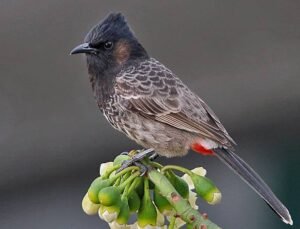Common Krait – Deadly Venomous
Introduction to Common Krait (Bungarus caeruleus)
Common Krait All Information: The Silent Predator You Need to Know About
The Common Krait, scientifically known as Bungarus caeruleus, is one of the most venomous snakes in India and a member of the “Big Four” snakes responsible for the majority of snakebite cases in the country. This species is found primarily in the Indian subcontinent, including India, Sri Lanka, Bangladesh, and Nepal. Recognizable by its glossy, black or bluish-black body adorned with thin white bands, the Common Krait is a nocturnal hunter, usually active during the night and preferring to stay hidden during the day. Despite its highly venomous nature, the Common Krait is generally shy and will often attempt to flee rather than confront threats. However, if provoked or accidentally stepped on, it can deliver a bite with deadly consequences due to its potent neurotoxic venom.

Interesting Facts About the Common Krait Snake
Nocturnal Navigators:
The Common Krait’s nocturnal lifestyle is so specialized that it often appears sluggish and less responsive during the day. This behavior has led to an old belief in rural areas that the snake becomes “blind” during daylight hours. However, this is simply a reflection of its adaptation to night hunting, where it is far more active and alert.
Egg-Laying Habits:
Unlike many other snake species, the Common Krait lays its eggs in clusters of 8 to 12 in warm, damp environments such as beneath rotting logs or within piles of leaves. The incubation period is around 60 days, and the hatchlings emerge fully equipped with venom, making them independent from birth.
Silent Striker:
One of the reasons the Common Krait is so dangerous is its ability to strike silently. Unlike other venomous snakes that may hiss or display threatening postures before striking, the Krait often bites without any warning. This behavior increases its chances of catching prey off-guard and also makes accidental human encounters particularly hazardous.
Seasonal Activity:
The activity levels of the Common Krait vary with the seasons. During the monsoon, when its prey is more abundant, the Krait is more active and encounters with humans increase. In contrast, during cooler months, it becomes less active, often going into a state of brumation, similar to hibernation, where it conserves energy until conditions become more favorable.
Resistance to Other Snake Venoms:
The Common Krait has a fascinating resistance to the venom of other snakes, including other venomous species. This resistance allows it to prey on smaller snakes, including those that are venomous, without being harmed by their bites. This trait further solidifies its position as a formidable predator in its ecosystem.
Unique Feeding Behavior:
While the Common Krait primarily preys on rodents, it exhibits a unique behavior known as “bite and release” when hunting larger prey. The Krait will deliver a venomous bite and then release its grip, allowing the venom to take effect while the prey is still alive. Once the prey is immobilized, the Krait returns to consume it, reducing the risk of injury from struggling prey.
General Characteristics and Anatomy
The Common Krait typically measures between 1 to 1.5 meters in length, although some specimens can grow longer. Its body is cylindrical and slightly flattened, with smooth and shiny scales that give it a polished appearance. The head is somewhat indistinct from the neck, and the eyes are relatively small with round pupils, an adaptation for its nocturnal lifestyle. The snake’s dorsal surface is marked by narrow white or yellowish bands that become more prominent towards the tail, while the ventral side is usually pale or white. The Krait’s venom is neurotoxic, targeting the nervous system and causing paralysis by inhibiting neurotransmitter release at the neuromuscular junction. This can lead to respiratory failure if not treated promptly with antivenom. Despite its fearsome reputation, the Common Krait plays a significant role in controlling the populations of rodents and other small animals, thus maintaining ecological balance.
The Role of Common Krait in the Ecosystem
The Common Krait is an essential predator in its ecosystem, helping to control the population of small mammals, particularly rodents, which are its primary prey. By keeping the rodent population in check, Kraits indirectly prevent the spread of diseases that these pests might carry, and reduce the damage to crops, benefiting agriculture. Furthermore, as prey to larger animals, such as birds of prey and mammals, Kraits contribute to the food chain, showcasing the interdependent relationships within their habitat. Their role is not just limited to pest control; they also serve as a food source for other predators, maintaining the balance within their ecosystem. However, due to their venomous nature, they are often misunderstood and feared by humans, leading to unnecessary killing. Understanding their ecological importance and dispelling myths about them can promote coexistence and reduce conflicts between humans and snakes.
Common Myths and Misconceptions about Common Krait
There are several myths and misconceptions surrounding the Common Krait, many of which contribute to fear and misunderstanding of these snakes. One common myth is that Kraits chase humans and attack without provocation. In reality, Kraits are shy and reclusive, often biting only when they feel threatened or are accidentally disturbed. Another misconception is that all snake bites from Kraits are immediately fatal. While Krait bites are indeed dangerous, timely medical intervention with the appropriate antivenom can save lives. There is also a belief that Kraits can hypnotize their prey with their gaze, which is entirely unfounded. The reality is that the Krait’s hunting success is due to its stealth and powerful venom, not any mythical ability. Dispelling these myths is crucial in reducing unnecessary fear and promoting a more accurate understanding of these remarkable creatures.
Species Profile: Common Krait
| Scientific Name | Bungarus caeruleus |
|---|---|
| Physical Description | Glossy black or bluish-black with thin white bands, cylindrical body, small eyes with round pupils |
| Habitat | Grasslands, fields, lowlands, and human settlements |
| Diet | Primarily rodents, also lizards, frogs, and other small animals |
| Behavior | Nocturnal, shy, reclusive, prefers to avoid confrontation |
| Venomous or Non-Venomous | Venomous |
| Venom Type | Neurotoxic |
| Venom Effects on Prey and Humans | Causes paralysis by blocking neurotransmitter release; can lead to respiratory failure if untreated |
| Common or Rare Species | Common in its range |
Habitat and Distribution
The Common Krait is found in a variety of habitats across the Indian subcontinent, from dry lowlands and grasslands to human settlements and agricultural fields. This adaptability to different environments makes it one of the most widespread snakes in the region. Kraits are commonly found in rural areas, where they often come into contact with humans, especially during the monsoon season when they seek shelter in homes. Their distribution extends from Pakistan, across India, to Bangladesh and Sri Lanka. They are particularly common in regions with a high density of rodents, their primary prey. The Krait’s ability to thrive in diverse habitats is a testament to its adaptability and resilience.
| Habitat | Geographical Distribution |
|---|---|
| Grasslands, fields, lowlands, and human settlements | India, Pakistan, Bangladesh, Sri Lanka |

Snake Behavior: Common Krait
The Common Krait exhibits fascinating behaviors, particularly in its hunting and feeding habits. As a nocturnal predator, it hunts primarily at night, using its keen sense of smell and heat-sensing abilities to locate prey. Its diet mainly consists of rodents, but it is also known to consume other small animals like lizards and frogs. Kraits use their potent neurotoxic venom to subdue prey, which causes paralysis and eventually death, allowing the snake to consume it at leisure. During the mating season, Kraits exhibit interesting reproductive behaviors, with females laying eggs in secluded, warm places. The young hatch fully independent, equipped with venom from birth. Kraits also have effective defense mechanisms; they are known to coil their bodies and hide their heads when threatened, a behavior known as ‘krait loop.’ If necessary, they will strike, delivering a venomous bite, but they typically avoid confrontation, preferring to flee.
First Aid and Medical Treatment for Common Krait Snake Bites
First aid and immediate medical treatment are crucial when dealing with bites from the Common Krait, given the potency of its venom. If bitten, it’s important to stay calm and immobilize the affected limb to slow the spread of venom. The bite site should not be cut or sucked, and a tourniquet should not be applied, as these methods can do more harm than good. The victim should be transported to the nearest medical facility as quickly as possible, where they can receive antivenom treatment. Common Krait venom primarily affects the nervous system, leading to paralysis, so medical professionals will monitor breathing and may need to provide respiratory support. Early administration of the appropriate antivenom is critical to neutralize the venom and prevent severe complications or death. In regions where Kraits are common, public education on snakebite first aid and ensuring access to antivenom can significantly reduce mortality rates.
Global Impact of Common Krait Bites
The Common Krait is responsible for numerous snakebite incidents across its range, particularly in India, where it is a leading cause of snakebite-related deaths. This impact is especially pronounced in rural areas where access to medical care and antivenom is limited. The venom’s neurotoxic effects can lead to fatal respiratory failure if not treated promptly. The global impact of Krait bites highlights the importance of snakebite management as a public health issue in regions where this species is prevalent. Efforts to improve snakebite awareness, first aid training, and access to antivenom are essential in reducing the mortality and morbidity associated with Krait bites. Additionally, research into the development of more effective antivenoms and treatment protocols continues to be vital in combating the health challenges posed by Krait envenomations.
Tips for Snake Enthusiasts
For those interested in observing snakes like the Common Krait in the wild, safety should always be a priority. Observers should maintain a respectful distance, as even non-aggressive species can bite if they feel threatened. It’s essential to wear protective clothing, such as boots and long pants, when exploring snake habitats. Aspiring herpetologists, or those studying reptiles and amphibians, should consider gaining practical experience through internships or volunteer work with wildlife organizations. Understanding snake behavior, venom properties, and the importance of snakes in the ecosystem is crucial for anyone interested in this field. Moreover, promoting conservation efforts and educating the public about the ecological benefits of snakes can help mitigate the negative perception of these fascinating creatures.
This detailed information about the Common Krait is designed to provide comprehensive knowledge while promoting awareness and respect for this significant yet often misunderstood species. For more engaging and informative content about wildlife, visit wildlifenest.com.
FAQs About the Common Krait Snake
Q1: Why is the Common Krait more active at night?
A1: The Common Krait is a nocturnal snake, meaning it is primarily active during the night. This nocturnal behavior is an adaptation that allows the Krait to hunt more effectively under the cover of darkness, where it can rely on its heightened sense of smell and heat-sensing abilities to locate prey. During the day, the Krait often appears sluggish and less responsive, preferring to stay hidden from potential threats.
Q2: How does the Common Krait’s egg-laying process work?
A2: The Common Krait typically lays 8 to 12 eggs in warm, damp environments such as under rotting logs or within piles of leaves. The eggs are incubated for about 60 days, after which the hatchlings emerge fully independent and equipped with venom. This independence from birth allows the young Kraits to begin hunting and surviving on their own immediately.
Q3: Does the Common Krait give any warning before it strikes?
A3: Unlike some other venomous snakes, the Common Krait is known for its silent striking behavior. It often bites without any warning, such as hissing or displaying threatening postures. This behavior makes it a particularly dangerous snake, as it can catch both prey and humans off-guard, leading to accidental envenomations.
Q4: How does the activity of the Common Krait change with the seasons?
A4: The Common Krait’s activity levels are closely tied to the seasons. During the monsoon season, when prey like rodents is more abundant, the Krait becomes more active and is more likely to encounter humans. In contrast, during cooler months, the Krait reduces its activity and may enter a state of brumation, similar to hibernation, conserving energy until conditions improve.
Q5: Is the Common Krait resistant to venom from other snakes?
A5: Yes, the Common Krait has a natural resistance to the venom of other snakes, including venomous species. This resistance enables it to prey on smaller snakes, including those that are venomous, without being harmed by their bites. This ability enhances its role as a dominant predator in its ecosystem.
Q6: What is the “bite and release” behavior observed in Common Kraits?
A6: The “bite and release” behavior is a unique hunting strategy used by the Common Krait when dealing with larger prey. The Krait will bite the prey and then release it, allowing the venom to take effect while the prey is still alive. Once the prey is immobilized, the Krait returns to consume it. This method minimizes the risk of injury from prey that may struggle or fight back.
Related Infomation
| Topic | Link |
|---|---|
| History of Snakes: Evolution, Habitats, and Survival | wildlifenest.com/history-of-snakes-evolution-habitats-and-survival |
| The Big Four Snakes of India | wildlifenest.com/the-big-four-snakes-of-india |
| What Are Reptiles? | wildlifenest.com/what-are-reptiles |
| Cobra Snake: All Information | wildlifenest.com/cobra-snake-all-information |
| Russell’s Viper | wildlifenest.com/russells-viper |


